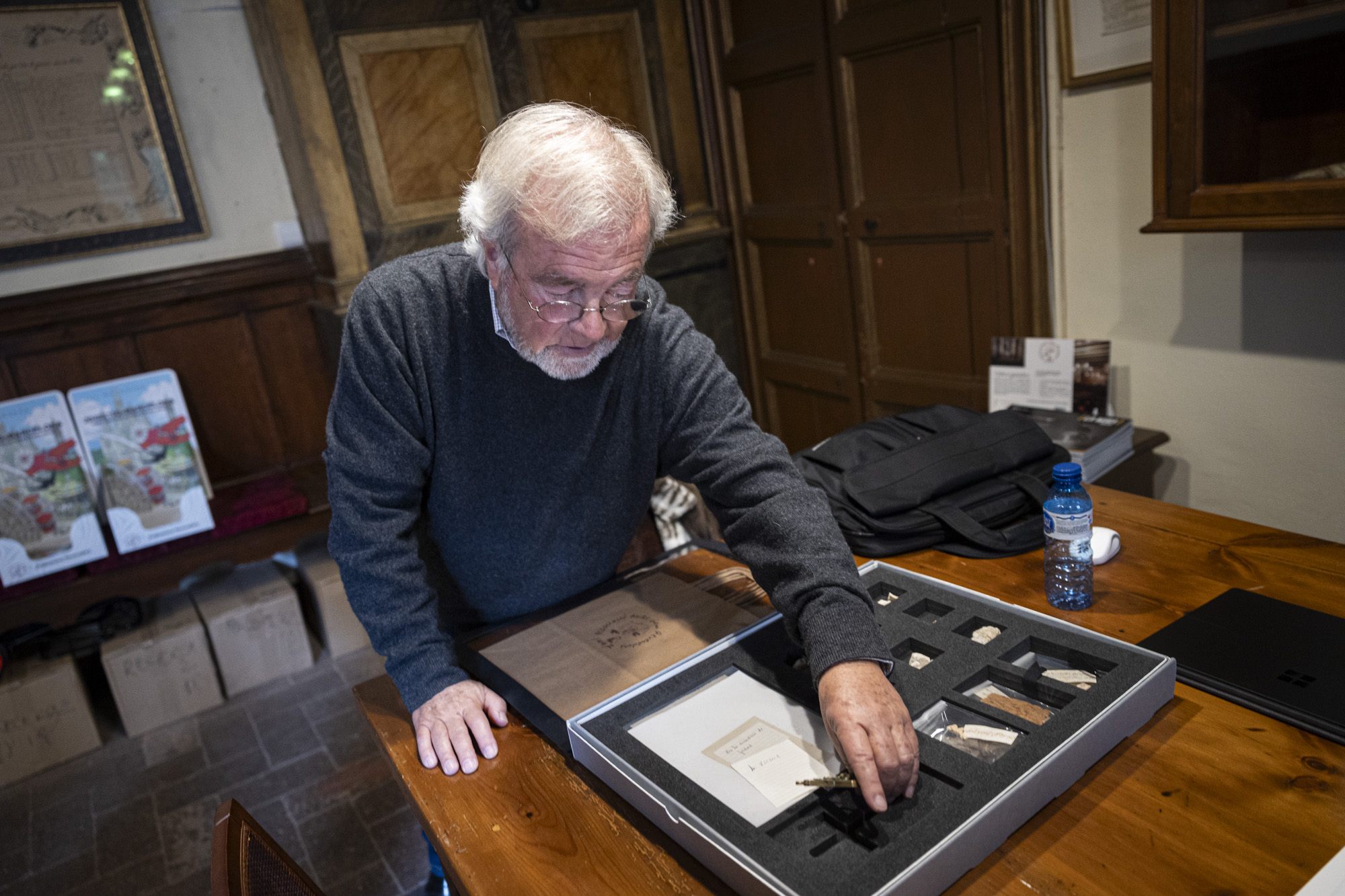The Associació Antic Gremi de Revenedors 1447, Barcelona's oldest organization and the heir to the trade guild of the mediaeval city's merchants, has, like every institution of medieval origin, an important link with religion. In fact, the organization was founded in the year 1447 under the patronage of Saint Michael the Archangel and even today it has its own chapel in the basilica of Santa Maria del Pi, a space that was the headquarters of the guild before it was moved to a new building located in Plaça del Pi itself, in the heart of Barcelona's Gothic Quarter. And there, among the treasures of this entity, there is a surprising collection of relics that few people know exist in Barcelona.
What is a relic? One of the definitions of the word - the relevant one here - is that relics are "parts of the body or clothing of a saint, or items that belonged to a saint"- that is to say, tangible objects, which can be fragments of bones or teeth, for example, that would have belonged to some saint, or also objects connected to them and, by extension, also to the main protagonists of the Christian religion, such as Jesus Christ himself or the Virgin Mary. Relics have been objects of veneration for centuries and many churches have them. For example, relics of Saint Eulàlia, the Catalan capital's patron saint, are preserved in the cathedral of Barcelona and, is as well known, the Holy Shroud, the linen cloth that is believed to have covered Jesus in his tomb, is preserved in Turin.
In the Middle Ages, obtaining and preserving relics became a very important task for the society of the time, both religious and civil, since in those times religion permeated all aspects of life. For that reason, it should not be surprising that a medieval guild was as eager as any other organization of the age to assemble its own collection. If anything though, it would be much more surprising for this collection to have been preserved until today. But it has been - partialy at least. The Association Antic Gremi de Revenedors 1447 still has its own treasured collection of relics, with some completely unique items.
Objects of devotion, of unlikely authenticity
Francesc Sendil, 66th president of the association, part of a direct line running from 1447 to the present day, does not hide his skepticism when showing the collection, because it must be taken into account that these are objects of devotion but with an unlikely possibility of historical authentication. With the same face that the friar William of Baskerville puts on when he explains to his disciple in the film The Name of the Rose that there are two preserved skulls of Saint John the Baptist, one from when he was an adult and the other from when he was a child, Sendil recognizes that it is necessary to maintain a "distance" with regard to the entity's relics. Of course, among fragments of cloth, small bones and other tiny objects, two very special pieces stand out.
The first of them is a set of fragments of what in known in Christians as the True Cross, that is, small pieces of the cross that was used to crucify Jesus Christ. The fragment is encased in a metal cross and it must be assumed that at the time it was an important object of veneration and religious devotion. However, Sendil himself acknowledges that if all the fragments scattered around the world were brought together, "several crosses could perhaps be made". And the fact is that the True Cross is surely the most important relic of the Christian world, with a history that begins with the surprising discovery in 326 in Jerusalem by the Empress Helena of Constantinople and which later became a symbol of the crusaders. During the Middle Ages, fragments of this cross reached many parts of the West, where many are preserved.


The other relic, which due to its unusual character Sendil defines as the "jewel in the crown", is a small flask that contains - attention - breast milk from the Virgin Mary herself. Or at least that's what the people who obtained it for the Guild and kept it believed. It is even considered that it was the apostle Bartholomew who collected the maternal milk in a bottle when the Virgin was nursing the baby Jesus. True or not, the fact is that the Guild keeps the small container. And moreover, Sendil points out that the collection also used to include a piece that has disappeared: "A foreskin." And whose foreskin would this be? "From the child Jesus", he replies.
In any case, beyond the skepticism and even the perplexity that the existence of these objects may generate, the truth is that their conservation not only makes them part of Barcelona's heritage, but that they are one more demonstration of the historical legacy represented by the Associació Antic Gremi de Revenedors 1447, the oldest organization in Barcelona.

